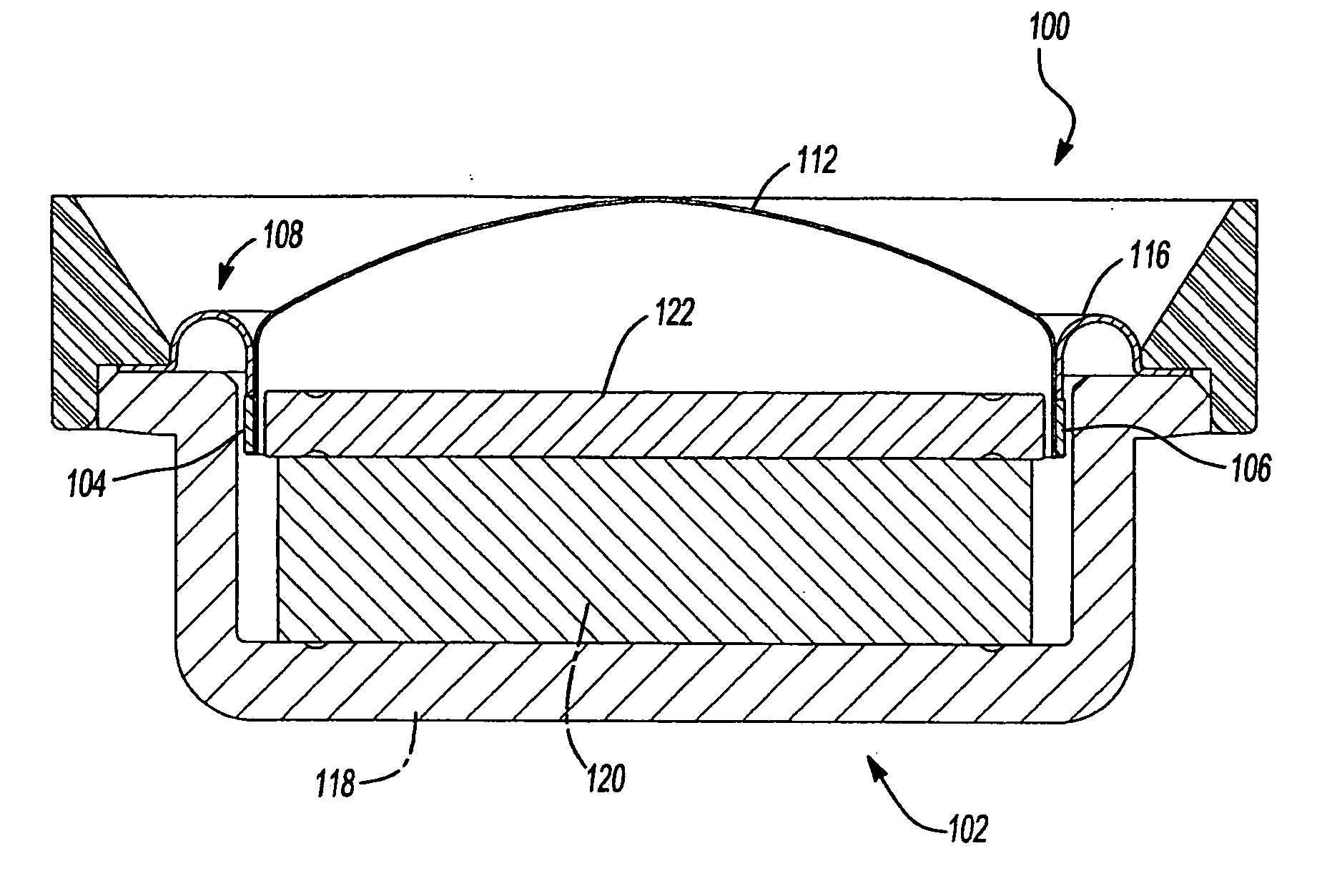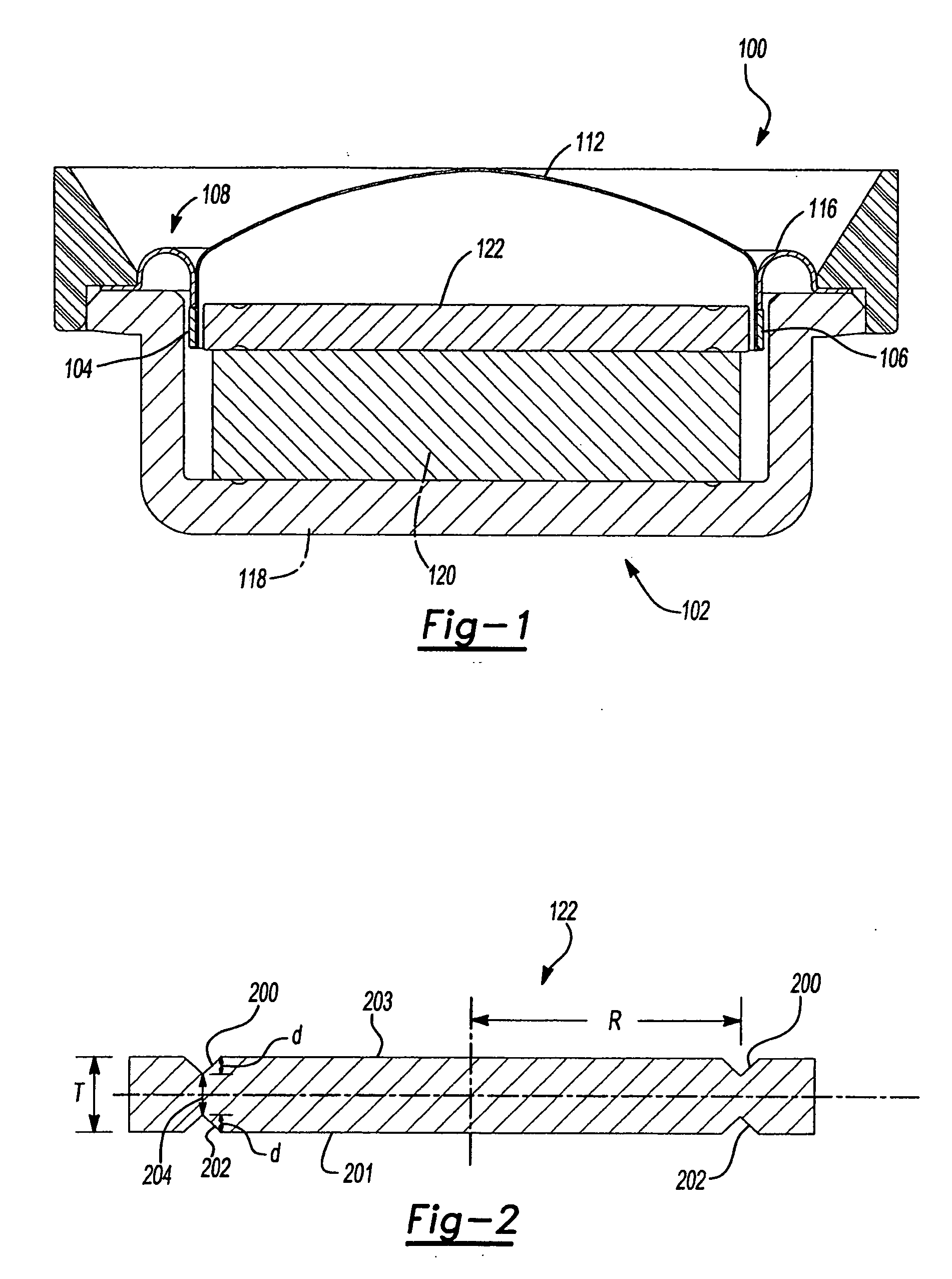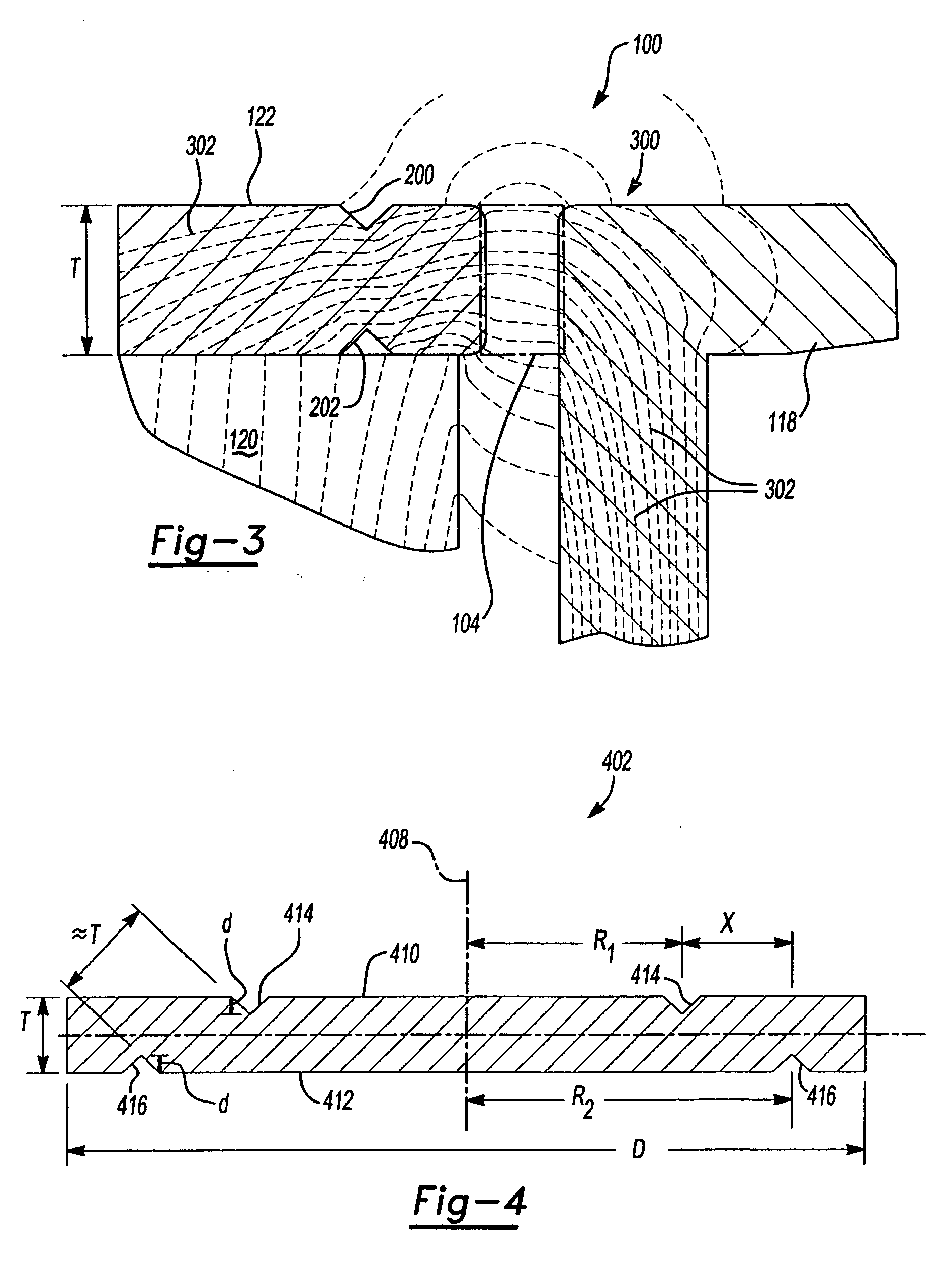Core cap for loudspeaker
a loudspeaker and core cap technology, applied in the field of loudspeakers, can solve problems such as creating unintended problems in the operation of the core cap, and achieve the effects of reducing the reluctance of the core cap 122, and reducing the ability to carry magnetic flux
- Summary
- Abstract
- Description
- Claims
- Application Information
AI Technical Summary
Benefits of technology
Problems solved by technology
Method used
Image
Examples
Embodiment Construction
[0021] As discussed in the background, the adhesive control grooves 200 and 202 allow for easier manufacturing since the orientation of the cap is error proof. However, the orientation of the control grooves 200 and 202 may cause unintended problems in the core cap 122. Examining the core cap shown in FIG. 2, the core cap 122 is “necked down,” having a cross-sectional dimension 204 that is smaller than the core cap's 122 nominal thickness T. This is due to the radial location of the two adhesive control grooves 200 and 202 on the opposing surfaces 201 and 203 of the core cap 122. The amount that the thickness of the core cap 122 is reduced is simply the sum of the depths d, of the opposing grooves 200 and 202 (i.e., 2d). In loudspeaker applications where the nominal thickness T of the core cap 122 is already relatively thin (e.g., in tweeters), the sum of the depths d of the opposing grooves 200 and 202 can be a significant percentage of the nominal thickness T of the core cap 122. ...
PUM
 Login to View More
Login to View More Abstract
Description
Claims
Application Information
 Login to View More
Login to View More - R&D
- Intellectual Property
- Life Sciences
- Materials
- Tech Scout
- Unparalleled Data Quality
- Higher Quality Content
- 60% Fewer Hallucinations
Browse by: Latest US Patents, China's latest patents, Technical Efficacy Thesaurus, Application Domain, Technology Topic, Popular Technical Reports.
© 2025 PatSnap. All rights reserved.Legal|Privacy policy|Modern Slavery Act Transparency Statement|Sitemap|About US| Contact US: help@patsnap.com



